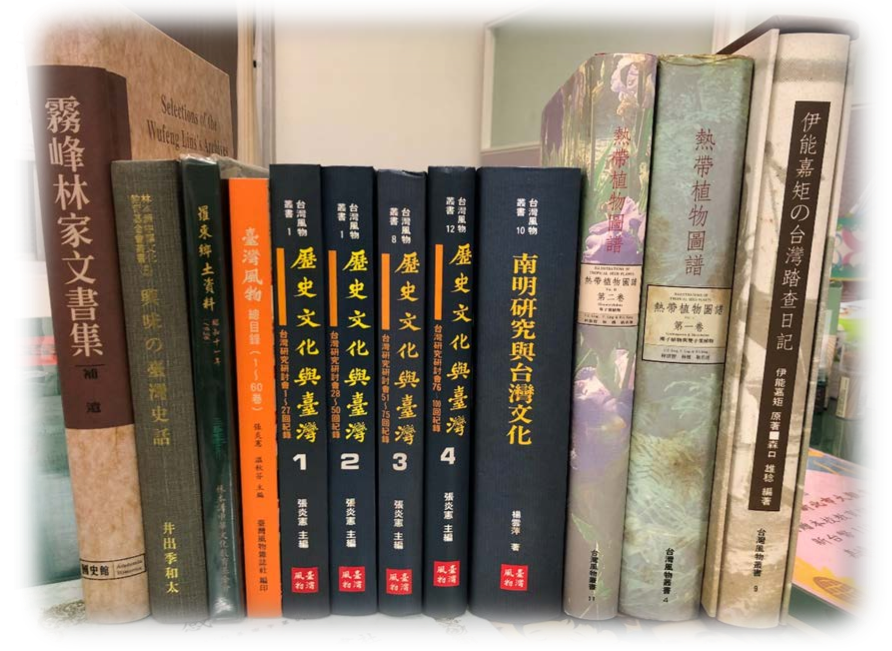 台灣歷史上的地震
台灣歷史上的地震
Earthquakes in Taiwan’s history
李泰翰/Lee Tai-Han
2001-10-01
 Kuangfu Middle School’s north classroom partially collapsed following the 921 earthquake
Kuangfu Middle School’s north classroom partially collapsed following the 921 earthquake
地震象徵人與土地間的另一種對話,在台灣歷史中不斷地與居住在這塊土地上的住民及統治者作不同程度地接觸。本週「台灣歷史之窗」特別邀請中央大學歷史系研究生李泰翰執筆,藉由回顧台灣歷史上一次次地動山搖的地震災難,讓讀者從災難史的脈絡瞭解台灣的歷史。
Earthquakes symbolize a kind of dialogue between man and earth, and in Taiwan’s history there has been a continual contact sustained to different extents with the inhabitants of this land and their rulers. This week’s Window on Taiwan is written by Lee Tai-Han, graduate student in history at National Central University. Lee takes a look at the repeated earthquakes in Taiwan’s history.
九二一集集大地震
從地震的命名來看,不難發現其不同於過去常以洋名稱呼的颱風,大多以發生日期或距離震央最近的鄉鎮地點為名。九二一集集大地震發生至今已有兩年,兩年來人們逐漸從這場夢魘中醒來,在這場大災難之後,重新喚起人們對這塊土地的注意,並檢討過去對於地震知識累積及傳承的重要性。這場發生於1999年9月21日凌晨1時47分芮氏規模達7.3級的大地震,造成戰後罕見的重大損失。在人員傷亡方面,計有2412人死亡,11305人受傷;在房屋方面全倒者有26831棟,半倒者有24495棟。在驚天動地之後,除了立即受到地震災難的住民剎那間面臨震慟外,緊隨而來的停水、停電、道路中斷所帶來的不便及不安,相信是許多人共同的記憶。
The huge 921 earthquake
It is not difficult to discern that, unlike typhoons, which until recently have often been given Western names, earthquakes are mostly named after the date of the occurrence, or the town or county nearest the epicenter. The 921 earthquake occurred two years ago, and two years on, people are gradually walking up from this nightmare. In the immediate wake of the earthquake, people were newly made aware of this land that we live on, and examined the importance of past accumulated wisdom and tradition regarding earthquakes. The quake occurred at 1:47 a.m. on September 21, 1999, and measured 7.3 on the Richter scale. It created major losses such as had rarely been seen since the war. In terms of human loss, 2412 people lost their lives, 11,305 were injured. 26,831 homes were completely destroyed, another 24,495 were partially destroyed. In addition to those who were immediately affected by the earthquake at the instant it occurred, many others were soon affected by the dangers and inconveniences that came when power and water supplies were cut off and roads were blocked or destroyed: these are all things that will surely stay in our collective memory.
「土埆地震」
若將時間往前回溯,日治時代傷亡最慘重的地震災害發生在1935年4月21日,正是日本統治台灣的四十週年,清晨6時2分16秒強烈的地震重創當時新竹、台中二州,規模 7.1級的大地震曾造成3422人死亡,11833人受傷,損毀房舍高達6萬棟以上。此次地震死傷如此嚴重,主要與當時台灣人居住的「土埆厝」有關,厚重的土埆常因雨水浸蝕而軟化瓦解,不但不耐震,同時更加重了災情,因此當時的日本學者佐野利器,便將此次地震稱之為「土埆地震」。
The “adobe earthquake”
If we look back in time to the Japanese occupation, the earthquake which caused the greatest loss of life occurred on April 21, 1935, on the fortieth anniversary of Japanese rule in Taiwan. At 6:02:16 a.m. a violent earthquake inflicted heavy losses on the two prefectures, as they then were, of Hsinchu and Taichung. It measured 7.1 on the Richter scale and killed 3,422 people. Another 11,833 were injured, and over 60,000 homes were destroyed. The reason why this earthquake inflicted so serious a loss of life was closely connected to the fact that many Taiwanese people built their homes out of adobe. The thick adobes softened and crumbled when soaked through with rain water, and not only could it not stand up to earthquakes, it actually intensified the effects of the disaster, which is why contemporary Japanese scholar Sano Liki called this earthquake “the adobe earthquake.”
 After the 921 earthquake, Kuangfu Middle School in Wufeng Township,
After the 921 earthquake, Kuangfu Middle School in Wufeng Township,
Taichung County decided to preserve this earthquake damage
有關地震的各種解釋與傳說
時間再往前推,在清代統治下的台灣,對於地震發生的科學性原因尚不瞭解,因此每當有地震發生之際,便常試圖予以各種解釋,大致來說對地震的解釋可分為幾種型態。第一類認為與統治有關:相信地震發生是國家統治良寙及治台失當的指標;第二類則與自然地理天文有關:如大風雨後、打雷及彗星出現等都有可能引起地震,同時台灣在來自內陸的人看來孤懸海外,地土浮鬆,加上地形環海容易搖盪的猜測,認為地震容易發生,而當植物出現異象時譬如「刺桐不開花」也是地震發生前的一個徵兆;第三類認為有週期性的關連:如歲逢「庚子」、「辛丑」地震容易出現;第四類則結合傳說:如巨鱉翻身、地底火山等傳說比比皆是,台灣在當時被視為「海外之地」,因此也常被認為災異多是件正常的事;第五類結合歷史上的兵災:藉由台灣歷史上諸如荷蘭為鄭成功所敗、鄭克塽降清、朱一貴民變起兵時,都曾發生大地震,故加以附會之。此外,地震還代表上天對人的賞罰,賞如官員殉節天地動容、罰如劣生宿妓慘遭壓斃,皆為地震生成的原因之一。而對於地震的發生成因運用科學儀器來觀察,在台灣直至日本治台兩年後(1897年)才開始。
Various interpretations and traditions regarding earthquakes
Going even further back in time, in Qing-governed Taiwan, the scientific causes of earthquakes were not yet understood, and so each time an earthquake occurred, people would try to give various interpretations, roughly speaking, we can split these interpretations of earthquakes into several different types. The first type of interpretation was that earthquakes were connected to government: people believed that the occurrence of earthquakes indicated whether or not the country was well ruled, or if Taiwan was being administrated inappropriately. The second type had to do with natural geography and astronomy: after a storm, the appearance of thunder and comets could bring on an earthquake, and people from the mainland of China viewed this lonely outpost, this land floating out at sea, and weren’t surprised that it was easy for earthquakes to happen in such a place. When plants showed strange signs such as “coral bean trees not coming into flower”, this too was an omen heralding an earthquake. The third kind was thought to be to do with cycles, such as certain years in the lunar 60-year cycle, and it was thought that earthquakes could easily occur at these times. The fourth kind was linked to legend: if a giant turtle flipped over, or there was a volcanic eruption, or something of this kind, then this would be a portent of an earthquake. Taiwan was at this time seen as “somewhere overseas”, and so it was often thought disasters were a commonplace even. The fifth kind was linked to historic military disasters: in Taiwan’s history, when, for example, the Dutch were defeated by Koxinga, when Cheng Ke-shuang surrendered to the Qing, when Chu Yit-gui’s popular uprising broke out, a major earthquake occurred on each occasion, so people drew the wrong conclusions. Earthquakes represented heaven’s rewards and punishments to mortals, rewards if an official died for the sake of honor, as a sign that heaven was visibly moved, and a punishment if some young scholar spent the night with a prostitute and was then crushed to death, all of these were factors behind earthquakes. The use of scientific machinery to investigate the cause of earthquakes did not begin until two years into the Japanese occupation of Taiwan (1897).
發生於清代的大地震
我們對於清代地震的瞭解,多僅限於遺留下來的文獻或檔案,從這些記載中可以得知,在清代的地震規模之大,受創之劇,實不亞於日治時期與戰後的兩大地震。倒如在建築物倒塌方面,清代一次嘉義的大地震居然造成了當時嘉義縣城鄉坍塌房舍高達1萬4千4百26間,同時在彰化縣也造成9千7百23間房舍在這次災難中倒塌。在人員的傷亡方面,造成數以百計或千計死亡人數的地震比比皆是,如道光28年的地震(1848年)嘉義、彰化地區便有千人左右慘遭壓斃。尤甚者,地震災難對於人們心靈的創傷更是難以彌補撫平。在大地震來襲時,先民不但直接面對天人永隔的巨創,同時在無法精確地獲知地震發生原因,常造成謠言漫佈市街。常見的傳言如食物、飲水被下毒,外來奸匪將趁亂威脅等事,不絕於耳。因此在地震災難發生後,地方文武官員如臨大敵,努力闢謠、加派兵力企圖維持當地治安。而這種謠言出現,人們擔心再一次受創的心靈,也與地震過後所帶來嚴重的衛生問題,導致疾病叢生,加劇死亡人數,有極大的關連。
Major Earthquakes during the Qing dynasty
Our understanding of earthquakes during the Qing dynasty is mostly limited by written records and files that have been left behind. From these written accounts, we learn that the large earthquakes that occurred during the Qing dynasty were actually as big as the two big earthquakes that occurred in the Japanese and post-war eras. For example, in terms of buildings destroyed, a big earthquake at Chiayi during the Qing dynasty unexpectedly caused the collapse of 14,426 buildings throughout Chiayi County, and of another 9,723 in Changhua County. Hundreds or even thousands of lives were lost in earthquakes, such as the earthquake of 1848, which killed around 1,000 people in Chiayi and Changhua. The emotional damage inflicted by earthquakes is even harder to heal. When big earthquakes made their surprise attacks, people in times gone were not only directly up against the great pain of losing their loved ones, they also had no way of knowing exactly why the earthquake had occurred, and so gossip and rumor would often spread through the streets. Common rumors such as the whisper that food and drink had been poisoned, and that evil bandits from outside were going to take advantage of the chaos to threaten the townsfolk would reach people’s ears. Consequently, in the aftermath of an earthquake, local civil and military functionaries would be extremely cautious, and work hard to quash the rumors, and increase military presence in an effort to preserve local public order. But the appearance of such rumors would cause people to worry that another big shock was on the way, and the serious public hygiene problems that cropped up in the aftermath of an earthquake, leading to epidemic illnesses, were very closely connected.
 In 1935, the great Central Region earthquake ruptured north-south rail connections in Taiwan.
In 1935, the great Central Region earthquake ruptured north-south rail connections in Taiwan.
This picture shows how a section of track close to the southern mouth of Tunnel 8,
north of Houli train station, was twisted out of shape by the earthquake
地震的影響與城鎮的興衰
地震的無遠弗屆的破壞力,在台灣歷史上造成了原本興盛的城鎮由盛而衰,如在清代同治元年(1862年)的地震,造成茅港尾的逐漸沒落。原本與鹽水港並駕齊驅的景象,近千戶的人口,街道上店舖比鄰,隨著地震的來襲,盛況不再。如日治時期1935年大地震,台中州的屯子腳,原本是內埔莊最為繁華的地區,在這場浩劫下,四千多的人口數剎那間便有十分之一罹難,重創整個城鎮發展。而這種驚人的破壞程度,對於環境的影響,更是不容忽視,「走山」、河川改道,對整個台灣的打擊是全面性的。
The influence of earthquakes and the rise and fall of cities and towns
Earthquakes’ power of destruction can reach everywhere, and historically, earthquakes have brought low formerly prosperous towns. The 1862 earthquake kicked off the gradual decline of Maokangwei. Originally, it was a prosperous as Yenshui Kang, and had close to a thousand inhabitants and streets packed with shops and stores. After the earthquake struck, the good times did not return. Tuntzuchiao in Taichung Prefecture was once the most bustling and prosperous town of Neipuchuang, but the earthquake of 1935 killed 4,000 people in the blink of an eye, and severely damaged the development of the entire town. The impact on the environment of this shocking level of destruction was even harder to overlook, mountains moved, rivers changed their course: the earthquake struck the whole of Taiwan.
「君之代少年」
在清代的台灣,由於清帝國版圖尚未涵蓋整個島嶼,加上訊息及交通的傳遞不便,因此多將地震視為地方性災情。但是在日本殖民之下,由於統治範圍擴及全島,地震訊息經過新聞、廣播及交通的傳遞,加上統治者強而有力的運作之下,總督府各部門、州廳、街莊皆投入救災及復健的行列,對於地震災害的救護及關懷,逐漸形成全島的共識。唯其統治者在救災的心態上,確有非議之處。救災成為統治者的恩賜,而在大力復建地同時,亦不忘塑造「美談」,曾刻意渲染一個苗栗公館莊學生詹德坤在遭受地震災害臨死之前唱了日本國歌「君之代」,來喚起台灣人對日本的「愛國」之心。
“Kimigayo”
During the Qing era, because the Qing empire’s domain in Taiwan did not yet cover the entire island, and communications and transport were not convenient, earthquakes were often seen as regional disasters. But under Japanese colonial rule, because the scope of government covered the whole island, news of earthquakes was transmitted through newspapers, broadcasting and transportation links, and Taiwan’s rulers powerful functioning, all the departments of the Governor’s Office, the prefectures and the cities were all involved in disaster relief and reconstruction work, and gradually an island-wide consensus was formed regarding aid and care in the wake of earthquakes. Only the Japanese rulers, in their attitude towards disaster relief, were very certainly reproachable. Disaster relief became a benevolent gift of the rulers, and when huge efforts were being made for reconstruction, they did not forget make up some instructive little anecdotes, and deliberately embellished a story about a student in Kungkuan Village in Miaoli, named Chan Teh-kun, who having been badly injured by the quake, sang the Japanese national anthem, “Kimigayo”, on his deathbed. The story was supposed to make Taiwanese people feel patriotic sentiments towards Japan.
在九二一大地震後,台灣面臨地震的態度逐漸成熟、積極,對地震所帶來的傷害,從原本只關注於人、物受創及撫卹重建的層次提升至古蹟維護及災難記憶的傳承。回顧台灣的地震災難,我們可以發現民眾對於地震的發生,逐漸從原本的懵懂猜測轉變到瞭解面對,政府部門對於地震災難的處理也積極全力以赴。隨著日益精進的科學發達,從目測到儀器觀察地震方式改變等等。不同的地震災難在台灣隨著時代的變遷,不同的程度。但是唯一不變的是,居住在這塊土地上的住民相互扶持、患難與共的心,將一代代地傳承下去。
After the great 921 earthquake, Taiwan’s attitudes in the face of earthquakes gradually became more mature and positive, and attitudes towards the damage brought by earthquakes shifted from the old concern only for people and things, bringing comfort and rebuilding, to the preservation of historical relics and the passing on of disaster memories. Looking back at Taiwan’s earthquakes, we can see that people have moved from what was originally muddleheaded conjecture to a deeper understanding, and government departments too have a more positive and powerful handing of earthquakes and disasters. With the development of science, we’ve gone from measuring earthquakes with our eyes to measuring them with equipment. Different kinds of earthquakes have happened in Taiwan at different times. But the only constant is the mutual support offered by the people living in this land, a oneness of heart during suffering, that is passed on from one generation to the next.
Edited by Tina Lee/ translated by Elizabeth Hoile
李美儀編輯/何麗薩翻譯









